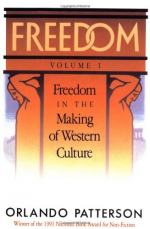
|
| Name: _________________________ | Period: ___________________ |
This test consists of 15 multiple choice questions and 5 short answer questions.
Multiple Choice Questions
1. Which of the following statements describes the new class that arises?
(a) It is a new aristocracy.
(b) It is more powerful than the aristocracy.
(c) It is dependent on the aristocracy.
(d) It is not dependent on the aristocracy.
2. Who are many of the proponents of these schools of thought?
(a) The upper class.
(b) Slaves or former slaves.
(c) The middle class.
(d) The aristocracy.
3. How does Greek society hold women?
(a) Not at all.
(b) Somewhat highly.
(c) Not very highly.
(d) Very highly.
4. Of what is Greek drama full?
(a) Strong women in small roles.
(b) Weak women in leading roles.
(c) Strong women commanding leading roles.
(d) Weak women in small roles.
5. Who destroys the Athenians system of democracy in 322 B.C.?
(a) The Mongols.
(b) The Turks.
(c) The Macedonians.
(d) The Persians.
6. Again what does Patterson use to support this point?
(a) French operas.
(b) Roman plays.
(c) German symphonies.
(d) Greek drama.
7. These factors lead to the development of what kind of society?
(a) A native slave based society.
(b) No longer a slave based society.
(c) A kingdom with serfs instead of slaves.
(d) A foreign slave based society.
8. Each of the three is concerned with what issue?
(a) Death and dying.
(b) The afterlife.
(c) The slavery-freedom issue.
(d) Compassion and compromise.
9. Who did the women confined to home have for company?
(a) Their children.
(b) Friends.
(c) Slaves.
(d) Relatives.
10. For what do the slaves yearn?
(a) Freedom and escape from bondage.
(b) Education.
(c) Love and compassion.
(d) Food and shelter.
11. How does Greek drama, especially tragedy, credit women?
(a) With being responsible for feeding the Greek population.
(b) With being responsible for guiding their men along the correct path.
(c) With being responsible for developing the social consciousness of concern for personal freedom and independence.
(d) With being responsible for building up the Greek population.
12. In this type of freedom, an individual can do what he wants without the constraint of what?
(a) Any choice.
(b) His own wishes.
(c) The wishes of others.
(d) Having to pay for it.
13. Upon what form of freedom do intellectuals frown?
(a) The civic view.
(b) The warm view.
(c) The outer or external view.
(d) The rigid view.
14. Between what freedoms do they distinguish?
(a) Personal and civic.
(b) Smooth and rigid.
(c) Outer and inner.
(d) Warm and cool.
15. What does the slave want?
(a) To be given the necessities of survival.
(b) To be free and an equal member of society.
(c) To be given work.
(d) To be loved.
Short Answer Questions
1. The imperialistic quest of the Athenians is now directed at whom?
2. Preoccupation with freedom is predominately a _____________ concept.
3. What is an example of a social reform for the abolishment of debt, debt bondage and enslavement for debt?
4. What dictates mortal life?
5. What is the third revolution, which involves the emergence of democracy?
|
This section contains 465 words (approx. 2 pages at 300 words per page) |

|




